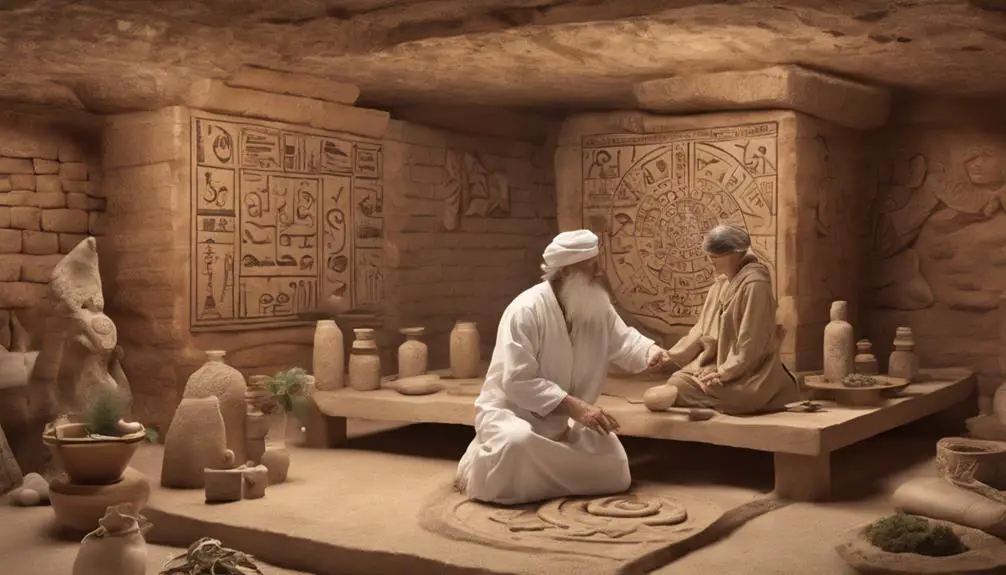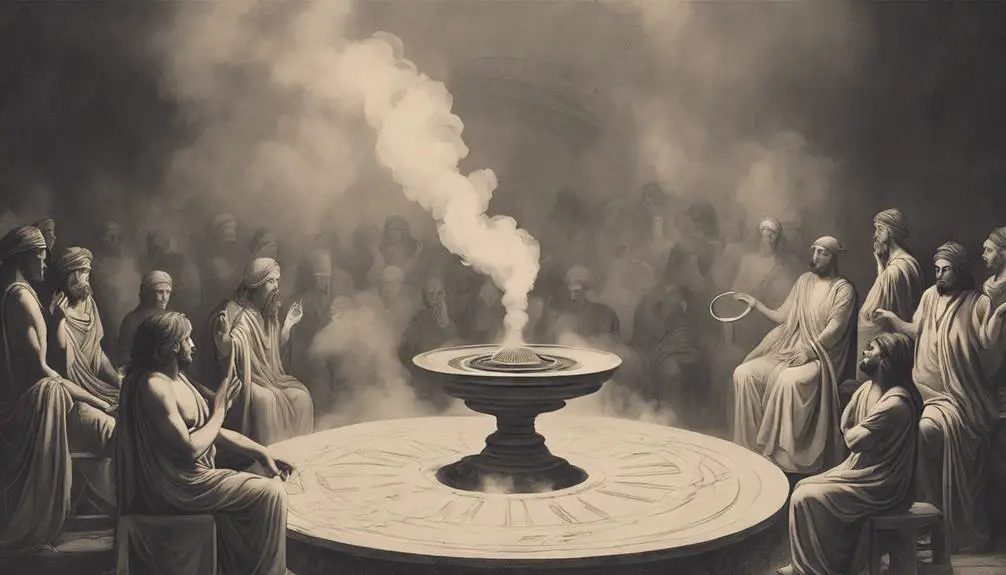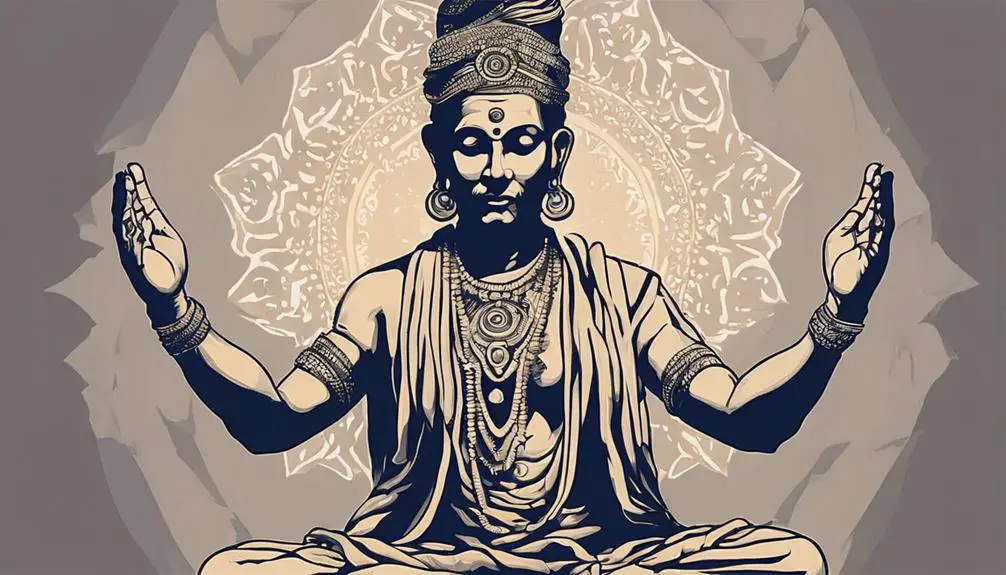Origins of Hypnosis Timeline
Historical Applications of Hypnosis in Early Societies
February 14, 2018 - Origins of Hypnosis Timeline
In early societies like Mesopotamia, Ancient Egypt, Greece, indigenous cultures, Hindu scriptures, and Chinese traditions, hypnosis was utilized for spiritual healing. Mesopotamian healers combined hypnotic techniques with prayers, inducing trance-like states. Egyptian sleep temples focused on using sleep for rejuvenation and interpreting dreams for well-being. Greek oracles communicated divine insights through altered states, shaping beliefs. Shamanic rituals in indigenous cultures used trance dancing and plant medicine for spiritual healing. Hindu scriptures detailed hypnosis for spiritual awareness, while Chinese traditions manipulated energy flow for balance. These historical applications showcase a deep link between altered consciousness and ancient healing practices.
Mesopotamian Healing Practices

Mesopotamian healing practices in ancient civilizations often incorporated the use of hypnotic techniques to induce altered states of consciousness for therapeutic purposes. Within the context of Mesopotamian trance rituals, healing prayers were recited to invoke spiritual healing.
The ancient Sumerians, inhabitants of Mesopotamia, believed in the power of hypnosis to address various ailments. Mesopotamian healers, known as *asu*, utilized a combination of spiritual incantations and trance-like states to connect with divine forces for healing.
These healing rituals involved rhythmic chanting, music, and repetitive movements to induce a hypnotic state in the individual seeking treatment. Through these practices, healers aimed to access the subconscious mind of the patient, believed to be the source of many illnesses.
Ancient Mesopotamian texts contain references to the use of hypnosis for therapeutic purposes, highlighting the deep-rooted belief in the connection between the mind, body, and spirit in the healing process. The integration of Mesopotamian trance rituals and healing prayers exemplifies the early application of hypnotic techniques in ancient civilizations for promoting overall well-being.
Ancient Egyptian Sleep Temples
The ancient Egyptian Sleep Temples were renowned centers dedicated to the practice of sleep-based healing and spiritual rejuvenation. These temples were integral to ancient Egyptian society, serving as places where individuals sought healing rituals and spiritual guidance through the power of sleep and dreams. The priests and priestesses in these temples were skilled in interpreting dreams and guiding individuals towards physical and emotional well-being.
Healing rituals in the Sleep Temples often involved inducing a state of deep relaxation and sleep in patients, allowing their subconscious minds to address ailments and receive divine messages. Spiritual guidance was a central aspect of the temple practices, as individuals believed that their dreams were a pathway to communicating with the gods and receiving insights into their lives.
The ancient Egyptian Sleep Temples demonstrate the deep-rooted belief in the connection between the mind, body, and spirit in ancient societies. Through the utilization of sleep as a tool for healing and spiritual exploration, these temples played a crucial role in the overall well-being of the people.
Greek Oracles and Trance States

Greek Oracles in ancient Greece often entered trance states induced by various methods to communicate with the divine and provide prophetic insights to seekers. These trance ceremonies were integral to the oracles' practice and were believed to facilitate a direct connection to the gods. Through these altered states of consciousness, the oracles experienced prophetic visions and mystical experiences that were interpreted as messages from the divine realm.
During trance states, the oracles would receive spiritual guidance and insights into future events. Seekers would consult the oracles seeking answers to pressing questions or seeking advice on important matters. The oracles' ability to access these trance states was highly revered in ancient Greek society, and their prophetic pronouncements held significant influence over political, social, and personal decisions.
The mystical experiences encountered during trance states were seen as a bridge between the human and divine worlds, allowing for a deeper understanding of the mysteries of existence. The oracles' role in facilitating these experiences and providing prophetic guidance played a crucial part in shaping the beliefs and actions of ancient Greeks.
Shamanic Rituals in Indigenous Cultures
Shamanic rituals in indigenous cultures encompass a diverse array of practices aimed at connecting individuals with spiritual realms and ancestral wisdom. These rituals often involve techniques such as trance dancing, where participants enter altered states of consciousness through rhythmic movements and music.
Trance dancing is believed to facilitate communication with spirits and ancestors, leading to spiritual healing and guidance.
Additionally, plant medicine plays a significant role in shamanic rituals. Shamans use various plants with psychoactive properties to induce altered states of consciousness and gain insights into the spiritual world.
Ceremonial chanting is another common practice in these rituals, with repetitive vocalizations helping to evoke specific energies and spirits.
The combination of trance dancing, plant medicine, and ceremonial chanting creates a potent environment for spiritual exploration and healing in indigenous cultures. These rituals are deeply rooted in tradition and are essential for maintaining cultural identity and connection to the spiritual realm.
Hypnotic Techniques in Hindu Scriptures

Within Hindu scriptures, ancient texts detail the utilization of hypnotic techniques for various purposes, shedding light on the historical applications of hypnosis in this cultural context.
Meditation practices within Hindu scriptures are often described as a way to induce altered states of consciousness, leading individuals to a heightened spiritual awareness. These practices involve deep concentration and focus, akin to modern hypnotic induction methods.
Spiritual healing is another prominent aspect where hypnotic techniques are believed to have been utilized in Hindu scriptures. The texts mention rituals and mantras that are recited to bring about healing in individuals by altering their consciousness and invoking divine energies.
Trance states are commonly depicted in Hindu scriptures, where individuals are described as entering deep states of altered consciousness to connect with higher beings or gain spiritual insights. These trance states bear resemblance to modern hypnosis practices, where individuals are guided into a state of heightened suggestibility for various purposes.
The incorporation of hypnotic techniques in Hindu scriptures showcases the deep-rooted history of hypnosis in spiritual and healing practices within this cultural framework.
Chinese Hypnosis and Altered States
In exploring the historical landscape of hypnosis, the examination of Chinese practices and cultural perspectives on altered states provides valuable insights into the diverse applications of hypnotic techniques.
In Chinese culture, meditation practices have long been intertwined with the concept of altered states of consciousness. Meditation is used as a tool to induce a state of deep relaxation and focus, akin to the trance-like state often associated with hypnosis.
Traditional Chinese therapies, such as acupuncture and qigong, also incorporate elements of altered states to facilitate healing processes. These therapies involve manipulating the body's energy flow, known as Qi, to restore balance and harmony.
Within this framework, hypnosis can be seen as a means to access and influence the Qi for therapeutic purposes. Chinese hypnosis, therefore, is deeply rooted in traditional practices that aim to harness the power of altered states for healing and overall well-being.
Frequently Asked Questions
How Did Early Societies View the Ethics of Using Hypnosis?
Ethical considerations regarding hypnosis in early societies were influenced by cultural perspectives, spiritual beliefs, and societal norms. Views on the practice varied, with some societies embracing it for healing and others cautioning against potential manipulation and harm.
Were There Any Negative Consequences Associated With Ancient Hypnosis Practices?
When exploring ancient hypnosis practices, it's crucial to consider potential dangers and consequences. Cultural perceptions and beliefs varied, with negative outcomes like misinformation, psychological distress, and exploitation emerging if hypnosis was misused or misunderstood in early societies.
What Role Did Music or Sound Play in Early Hypnosis Techniques?
Sound therapy and rhythmic chanting were integral components of early hypnosis techniques. Music or sound was used to induce trance states, enhance relaxation, and facilitate suggestion. These auditory stimuli played a crucial role in the efficacy of ancient hypnosis practices.
Did Early Societies Have Specific Guidelines for Choosing Hypnotists?
In early societies, hypnotist selection was guided by cultural norms and traditional beliefs. Specific guidelines existed for choosing hypnotists based on their mastery of hypnotism techniques and their reputation within the community.
Were There Any Famous Historical Figures Known for Their Use of Hypnosis?
Famous historical figures, like Anton Mesmer, are known for their use of hypnosis in hypnotic healing. Mesmer's influence in the field of hypnosis laid the foundation for its modern applications and understanding of its therapeutic benefits.
Conclusion
In conclusion, the historical applications of hypnosis in early societies such as Mesopotamia, Egypt, Greece, indigenous cultures, Hindu scriptures, and China demonstrate the widespread use of altered states of consciousness for healing, divination, and spiritual practices.
These ancient practices provide insight into the development of hypnosis as a therapeutic tool and the cultural significance of trance states in various civilizations throughout history.
